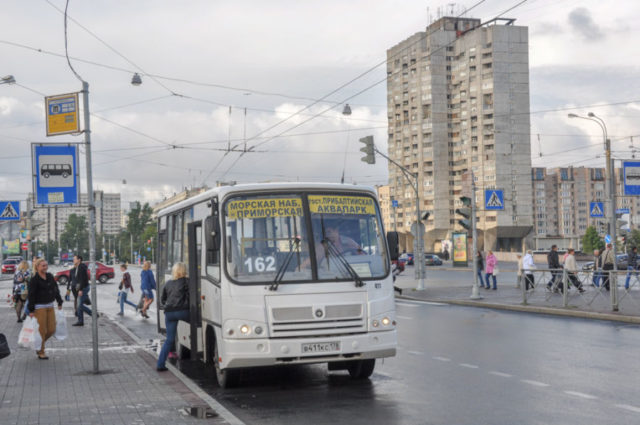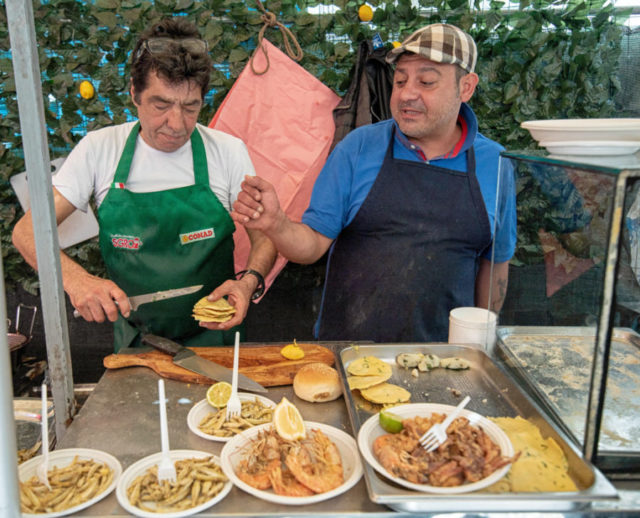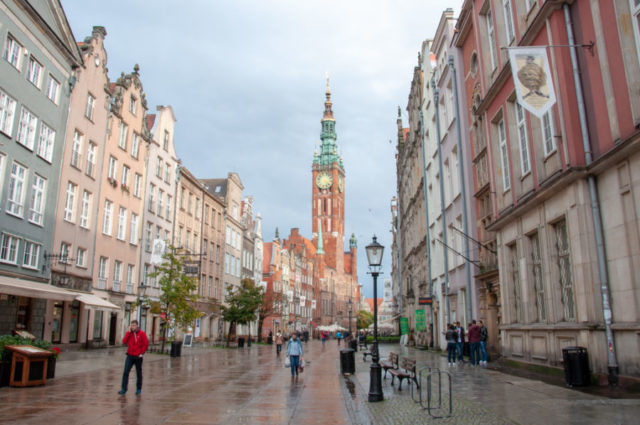I was recently interviewed by the Washington Post for an article about budget travel tips. The article turned out great, and I learned a lot from my fellow travel writers: Matt Kepnes of Nomadic Matt, Cindy Richards of Traveling Mom, and John DiScala — a.k.a. Johnny Jet.
The interview got me thinking about how traveling on a budget isn’t just cheaper — it’s often a richer experience. Looking back, some of my favorite travel memories came on a very tight budget.
Obviously, the Post couldn’t use all of the tips I suggested. For those looking to stretch their travel dollars in Europe, here are their questions, and my unabridged answers.
Explain your philosophy for travel, and how it’s compatible with being on a budget.
For me, travel is all about experiences. And I find that — in many ways — the more money you spend, the more barriers you create between yourself and the places you’ve traveled so far to experience. I meet more interesting people staying in simple guesthouses and B&Bs instead of anonymous, international chain hotels. I enjoy the challenge of figuring out public transportation — say, for getting from the airport downtown — rather than just hopping in an overpriced taxi. And very often, I’d rather rub elbows with locals having a street food feast than dine at a white-tablecloth splurge restaurant.

I’m naturally thrifty, so even when I’m traveling for work and someone else is footing the bill, I like to keep things simple and affordable. For me, figuring out affordable ways to experience the places I’m visiting is fun. It’s the thrill of the chase.
Are there times when you had a better travel experience because of being on a tight budget — one that you would have missed out on if you’d spent more money?
Earlier this summer, I was working on a new Sicily guidebook, and one of my favorite experiences was sampling all of the fantastic street food in Palermo. Rather than going to a stuffy restaurant, I bellied up to food carts at the market with working-class Palermitani to grab a hunk of sfincione (Sicilian pizza), a sizzling arancina (deep-fried rice ball), or a spleen sandwich.

Last summer, I was working on a guidebook in one of Europe’s most expensive countries, Iceland. I was glad I had decided to stay in affordable Airbnbs, which put me in less touristy, more residential neighborhoods. For the cost of a basic, tiny single room with a shared bathroom at a downtown Reykjavík guesthouse, I rented an entire cottage all to myself in the bedroom community of Hafnarfjörður. I loved staying in the Reykjavík suburbs: Anytime I wanted, I could zip into the very touristy downtown — where all the expensive hotels are. And then, when I had enough, I could easily retreat to my Icelandic neighbors.
Speaking of Iceland, every tourist who goes to Iceland heads for the Blue Lagoon lava-rock spa. And that’s an amazing experience, for sure. But it’s expensive — currently around $100 per person in high season. Few travelers realize that Iceland has dozens of other thermal swimming pools, filled with water just as hot as the Blue Lagoon’s, for one-tenth the price. Obviously, you don’t get the exotic location. But instead of being frequented almost entirely by tourists, a municipal Icelandic swimming pool surrounds you with Icelanders, hanging out with family and friends, unwinding after work.

It’s common for a traveler to spend a few days in Iceland and barely interact with any Icelandic people who they aren’t doing business with. Staying in a suburban neighborhood and checking out the nearest thermal swimming pool not only saves money — it fosters a more authentic connection to the local culture. (If you’re headed there, be sure to check out my full list of Iceland budget travel tips.)
While working on our Rick Steves’ Scandinavian and Northern European Cruise Ports guidebook, I arrived at the St. Petersburg cruise terminal on a mission to find the cheapest way into the city. I watched all of the other tourists hop into taxis and pay $25. Then I noticed a lonely bus stop a few steps away. I waited there a few minutes, and a bus showed up. I paid about $1, rode it to a Metro stop, then paid another $1 for a Metro ride to Nevsky Prospekt — the boulevard in the heart of the city. Because I was zipping under congested streets, I made it downtown in record time, easily beating all of my fellow cruise passengers in their taxis…for $2 instead of $25. It was faster, cheaper, and more memorable — since I was riding along with Russian commuters, instead of complaining about traffic jams. That’s just good travel.

On my first independent backpacker trip to Europe, the only London theater I could afford was at Shakespeare’s Globe — where they sell “Groundlings” tickets, standing in the pit in front of the stage, for just £5. (These tickets are still available, nearly 20 years later, and still the same price!) I vividly remember standing on sore feet, for three and a half hours, in the drizzle, watching Anthony and Cleopatra. The actors were so close, I could have reached up and touched them. I’ve been back to the Globe since — shelling out for real seats — but I remember that Groundlings experience better than any of them…and mostly in a good way.

On later trips, I learned that most of London’s big, glitzy West End theaters wait until the morning of the show to sell their front-row seats — for half price. One week, my wife and I rented an apartment in Soho, near all of the big theaters. Each morning, we’d show up at a theater box office right when the front-row seats went on sale, and that evening, we enjoyed the best seats in the house for budget prices.
And I can think of plenty of great travel experiences I’ve enjoyed by traveling “on the cheap” (second-class train car) instead of splurging on a first-class seat, or a flight. On the rare occasion that I ride in the first-class compartment of a train, I’m amazed how boring it is up there. Meanwhile, I think fondly on many journeys spent jammed in a six-person compartment, sharing snacks and drinks and getting to know new friends.
What are your best tips for how people can save money while traveling?
Figure out affordable local alternatives. In any place, there’s the expensive, tourist-oriented option (taxi) and the cheaper, local alternative (public bus or tram). The local alternative saves money, but it also adds an authenticity and a spirit of adventure to your trip.

Take advantage of street food. Every culture has a cheap, delicious, filling dish that locals grab on the go: herring in the Netherlands, souvlaki in Greece, Currywurst in Germany, zapiekanka in Poland, “Flemish fries” in Belgium, Cornish pasties in Britain, and döner kebab just about anywhere in Europe. It’s easy for the budget traveler to slip into a rut of seeking out American fast food chains for a cheap meal. But if you challenge yourself to find the local alternative, you can both save money and experience another facet of that culture.
Choose inexpensive destinations. Now, I want to be clear here: If you’re dreaming of Iceland, you should go to Iceland…even if it’s expensive. But if your budget matters more than the specific destination, you might as well go somewhere inexpensive (or, barring that, rush through the pricey places and linger in the cheap ones). On one trip, I spent a week in budget-busting Norway, where — on my last night in Oslo — I went to a cafeteria and bought a cookie for about $5. The next day I flew to Gdańsk, the glorious maritime capital of Poland, where I had lunch at my favorite “milk bar” (budget canteen), right along the main drag. As I dug into my plate of pierogi, I realized that my entire lunch cost me less than last night’s cookie. I’m not saying Gdańsk is “better” than Oslo — it depends on what you’re looking for — but there’s no question that it’s much, much cheaper. If saving money is your priority, give serious thoughts to Europe’s budget fringes: Portugal, Greece, Poland, Hungary. Europe’s cheapest corners are cheap because they’re out of the way — far less touristy, less crowded, and easier to get an authentic dose of local culture. In Salzburg or Venice, you’re a pest…just one more tourist. In Coimbra or Kraków, you’re a novelty.

Do your homework. All of the other tips boil down to this. The more prepared you are, the more affordable and rewarding your trip will be. All over Europe, it’s so clear to me that things designed to be “easy for tourists” are also overpriced. If you come prepared, you can skip right past those and take advantage of the cheap, more memorable local alternative. Use a good guidebook, check out websites and blogs that match your travel philosophy, and solicit tips from friends on social media.
What are your favorite budget travel tips?
Be sure to read the Washington Post article to see what other travel writers had to say on the topic.
For a more comprehensive roundup of travel tips, check out Rick’s Thrifty 50 Travel Tips…and his follow-up, The Dirty 30 — More Cheap Tricks.
We always try to save a dollar here and there. However, we work hard and play hard and don’t mind spending a little more here or there. If you are saving a little elsewhere it all works out. Most of our European adventures we’ll probably never see again so if need be we’ll go above and beyond to accomplish what we want to see and do.
Good point. That’s why I say “CAN BE” better. I have lots of fond memories from trips on a tight budget, but also plenty from times I’ve splurged here and there. I guess the point is, for those who have to travel on a tight budget, it’s not a stretch to consider that a plus.
Hey Rick- you didn’t mention the $350 visa needed to get the $2 transit trip in St Petersburg?
You don’t need the visa in St. Petersburg if you’re traveling on a cruise ship docking there for less than 72 hours.
Budget travel is nice, but don’t forget that sometimes you can do overpricey tourist stuff if you want because you probably won’t have the chance to do it again. That being said, if you want to travel often, you do have to be smart about it and choose affordable destination.
Everything you mentioned. Yes, take the local bus into town, and it really is about 2 Euro. The info desk can probably help in English. If you have a local metro pass, it can be fun to go to the far reaches of the route. Especially if it’s above ground.
Learn at least a few words of the local language. At a confusing moment at a bus stop, asking “Snakker du engelsk” can prompt smiles and help. In fact, learn all the basic tourist words. Always greet the shop keeper. Show interest.
Eat at the train station, or it’s surrounds, or at a food cart, grocery store, or department store. We love shopping at grocery or hardware stores, even for souvenirs.
Travel in winter. You can walk right in to ponder The David. Travel is cheaper and shopkeepers are happy to see you. Be aware of what ugly tourist actions are and don’t do them. Go to the restroom when it’s handy and free, before you are desperate. Don’t miss the Jubiloos in London!
I love these tips! My husband and I just took a Caribbean cruise and chose to strike off on our own in a number of the ports instead of doing the pre set excursions. When we got to Grand Cayman, we hopped on a local bus, went to the public portion of Seven Mile Beach, rented a couple chairs and an umbrella for about $20, got a huge fresh coconut to drink and just hung out. Then just hopped back on the bus, grabbed lunch at a local bar, toured a rum factory, and went back to the port. We got to see so much of the island for less than about $50 total (well, not counting the rum we bought!) Meanwhile, most folks from the ship either stayed in port or went to a resort and rented a $200 cabana for 5 hours and saw nothing else. I suppose there is something to just relaxing but I figure I may only ever get to a place once in my life and I really want to see it!
Yes, travel safe and immerse yourself in the culture- that is the best way to travel in Netherlands. Whether you are in Amsterdam or in relatively smaller cities like Venray.